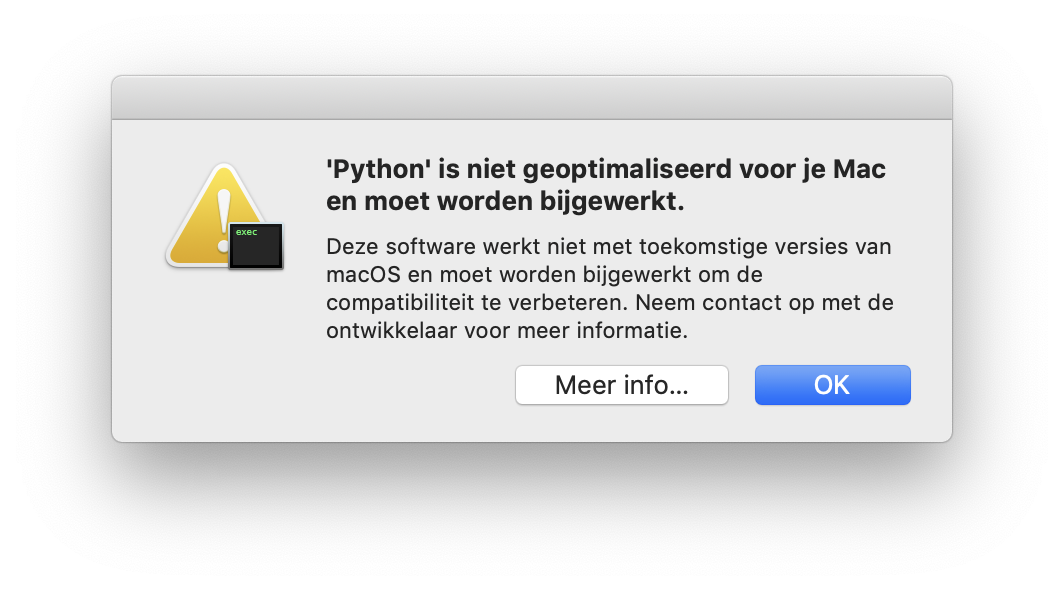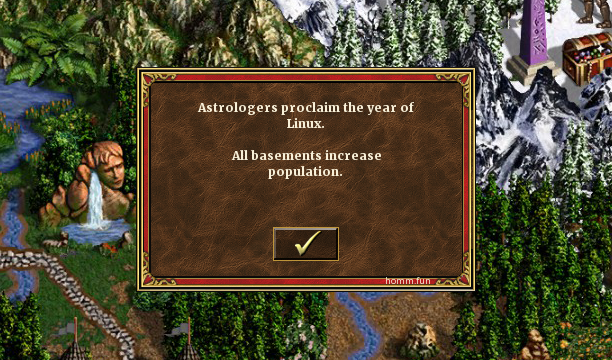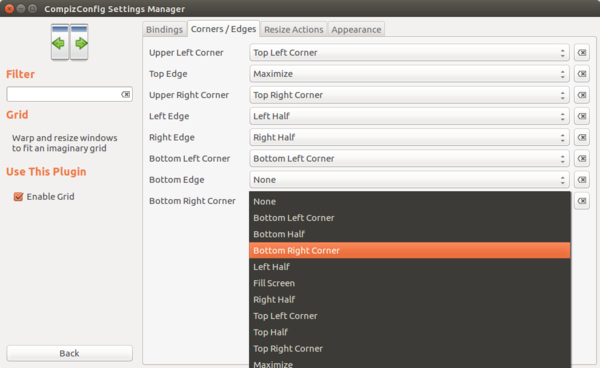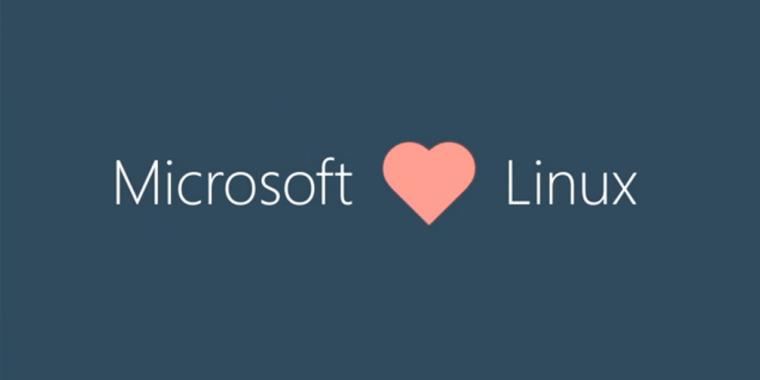Windows Subsystem for Linux
-
Has anyone used that stuff much? Is it any good?
Looks like I need to start running Windows or Mac at work and I'm wondering which I'd prefer / would be least bad.
-
@boomzilla said in Windows Subsystem for Linux:
Has anyone used that stuff much? Is it any good?
Looks like I need to start running Windows or Mac at work and I'm wondering which I'd prefer / would be least bad.
It depends what you need. It can't use USB devices, which was a dealbreaker for me.
-
@boomzilla said in Windows Subsystem for Linux:
Looks like I need to start running Windows or Mac at work and I'm wondering which I'd prefer / would be least bad.
Poor you, I would update my CV

I'm sure Mac would feel closer to home, specially if you use the CLI a lot
-
I usually just give up trying to get Windows to behave like I want and run a VM with linux in it, and give it max priority in the host OS if I am stuck with windows.
-
@TimeBandit said in Windows Subsystem for Linux:
I'm sure Mac would feel closer to home, specially if you use the CLI a lot
Yeah, that's kind of what I'm thinking.
Poor you, I would update my CV
 . No, I really like my job. I don't think these new policies will be enough to make me want to go somewhere else.
. No, I really like my job. I don't think these new policies will be enough to make me want to go somewhere else.
-
@Carnage said in Windows Subsystem for Linux:
I usually just give up trying to get Windows to behave like I want and run a VM with linux in it, and give it max priority in the host OS if I am stuck with windows.
I've thought of that, too. In fact I've done that in the past. I do it now, except now I also have a Linux host.
-
@TimeBandit said in Windows Subsystem for Linux:
I'm sure Mac would feel closer to home, specially if you use the CLI a lot
This is one of the reasons I prefer macOS at work. Proper Unix CLI not a poor Windows representation of one.
-
It... works?
I installed a base Debian image into it, set up some basic tools, ssh client and zsh the way I like it so I have a decent shell.
It can access all the filesystems fine, but sadly it's pretty sandboxed - for example, I can't mount my ext4 partitions in there,
/devis close to empty :(There are people who set up a full desktop environment using some insane implementation of X for Windows, but it's not hardware accelerated AIUI, so no idea how well KDE would work on it (IIRC you're a KDE user?). Mate or XFCE would probably do OK.
If all you want is the shell so you get all the nice things that brings, it's fine. Anything past that, didn't really mess with it enough to say. At least it's painless to set up (basically, enable it under Windows features, got to Store, pick a distro, hit install, you get a fully functional shell from that) so it's not a pain to at least try it

-
Hrrrrrmmmm...looking at standard hardware configs...the workstation laptop version running Windows has...
- 32GB, 2x16GB, 2666MHz DDR4 Non-ECC
- NVIDIA Quadro P1000 w/4GB GDDR5 (490-BEJD)
- M.2 512GB PCIe NVMe SSD
- Intel Core i7-8850H (Six Core 2.60GHz, 4.30GHz Turbo, 9MB 45W)
I should definitely be able to run a decent VM inside of that.
-
@boomzilla said in Windows Subsystem for Linux:
Has anyone used that stuff much? Is it any good?
Looks like I need to start running Windows or Mac at work and I'm wondering which I'd prefer / would be least bad.
There seems to be two questions. One is specifically related to Windows Subsystem for Linux, which I haven't used. The other seems to be about Windows vs. Macs.
Do I understand correctly that you've never used Windows, or at least not substantially? I did not know that such people existed in the industrialized world.
I've used both Windows and Macs, and I prefer Windows. I prefer Linux overall, because it's the least limiting, and I avoid Macs if I have a choice, because it's the most limiting. (Yes, I know that there are ways to overcome the limitations of Macs, but I find there are a lot of customizations that are easier to do on Windows.)
Although I overall prefer Linux, I cannot deny that there a lot of nice features in Windows.
-
@boomzilla That's close to what I'm using (yours is slightly beefier) and I'm running multiple guests (including a Win10 guest at times) no problem.
Granted, Linux host and QEMU, so your overhead may vary.
-
@jinpa said in Windows Subsystem for Linux:
Do I understand correctly that you've never used Windows, or at least not substantially?
No. I'd just prefer to avoid it. I've never substantially used Macs and I'm a bit worried about that. The more I think about it the more I like the Windows host / Linux guest setup.
Based on what @Onyx has said (which largely confirmed my suspicions) I think I'd be very disappointed with using the Linux subsystem.
-
@boomzilla said in Windows Subsystem for Linux:
Looks like I need to start running Windows or Mac at work and I'm wondering which I'd prefer / would be least bad.
Which desktop environment do you use on your Linux machine? Or better: do you use one that’s more Windows-like or more macOS-like? If KDE’s your preferred one, you’re probably better off with Windows than with a Mac, for example. OTOH, if you’re almost invariably using the terminal, I think you’d find a Mac easier than Windows (but you’d have to remember you’re on BSD and not Linux, which makes a noticeable difference in many commands and how you use them).
-
@Gurth said in Windows Subsystem for Linux:
If KDE’s your preferred one, you’re probably better off with Windows than with a Mac, for example.
Yeah, I use KDE.
-
@boomzilla said in Windows Subsystem for Linux:
Yeah, I use KDE.
Why would anyone use something else

-
@boomzilla My last experience with KDE was with version 2 (or maybe early 3? I don’t remember) but it always gave me the strong impression of having been designed by people who wanted Windows to have more options. OTOH, after I’d gotten used to OS X and had to use a Linux machine, I much preferred Gnome (2, at the time) because it was easier to go between that an OS X than from KDE.
-
I played with both WSL and MSYS2 on Windows. Both have their issues, neither is quite on the level of a real linux host.
WSL's big problem is interop with Windows. If you want to open a windows program from shell or have a windows debugger connect to a process running in linux-land, you're gonna have a bad time. It's possible to do some of that stuff, but not without constant issues.
MSYS2 / cygwin has better interop with Windows (not ideal), but it's not actually real linux. It's slower too, it has limited variety of software, it has problems with stdin/stdout when interfacing with Windows CLI apps.... It's basically a weird half-supported hack. This is what I'm using at the moment, but it's not ideal.
Mac has the best GUI-over-nix you can possibly get. Sure, it's some outdated version of BSD instead of real linux, but you can install enough gnu stuff that there is little practical difference. The problem with Mac is, if you are used to Windows/KDE paradigm and keyboard layout (and like it), it's gonna be an uphill battle. I tried adapting MacOS to work more like Windows, but that setup was always kind of glitchy and "90-ish % there".
In the end, VM running on Windows is probably the way to go. There are two speed bottlenecks you'll encounter:
- Disk access, there is shitty NTFS underneath the linux image slowing everything down. I heard you can go around it if you have a raw partition you use only in VM, but haven't tried it.
- Graphics. It used to be that VirtualBox didn't support 3D acceleration properly and I had to run some lightweight DM, like XFCE, to get decent speed. New versions now support the same interface as VMWare, so things work much better now on that front.
-
@TimeBandit said in Windows Subsystem for Linux:
@boomzilla said in Windows Subsystem for Linux:
Yeah, I use KDE.
Why would anyone use something else

I have half a dozen desktop managers (including KDE) which I log onto on a rotating basis. Mostly so I can say, "In your face, MS! Let's see someone do that on Windows!"
-
@cartman82 said in Windows Subsystem for Linux:
In the end, VM running on Windows is probably the way to go. There are two speed bottlenecks you'll encounter:
- Disk access, there is shitty NTFS underneath the linux image slowing everything down. I heard you can go around it if you have a raw partition you use only in VM, but haven't tried it.
I'm going to assume / hope that running an M.2 SSD will compensate for that sort of thing.
- Graphics. It used to be that VirtualBox didn't support 3D acceleration properly and I had to run some lightweight DM, like XFCE, to get decent speed. New versions now support the same interface as VMWare, so things work much better now on that front.
I'll be using VMWare so that shouldn't be a problem. I've never managed to get VirtualBox to work.
-
I’ve used Cygwin before but never WSL. Cygwin “works” kind of ok for terminal programs and you can technically even run an X server, but it feels like a hack. I assume WSL is much better integrated than that.
As far as Mac goes, it’s got native Unix tools and comes with bash as default, so terminal support is really good. You can also easily install ports of pretty much everything with brew.
The macOS GUI is sufficiently different from Windows / KDE but overall pretty usable. Except Finder, which is an abomination.
Major problems I see would be having to actually buy overpriced / underpowered Apple hardware and the different keyboard.
-
@topspin isn't Bash like an ancient version? Like, the last GPLv2 version released? I suppose it's still Bash...
-
@admiral_p said in Windows Subsystem for Linux:
@topspin isn't Bash like an ancient version? Like, the last GPLv2 version released? I suppose it's still Bash...
$ bash --version GNU bash, version 3.2.57(1)-release (x86_64-apple-darwin18) Copyright (C) 2007 Free Software Foundation, Inc.So... yes?
Anyone who cares about that is able to install something newer.
-
@boomzilla said in Windows Subsystem for Linux:
Hrrrrrmmmm...looking at standard hardware configs...the workstation laptop version running Windows has...
- 32GB, 2x16GB, 2666MHz DDR4 Non-ECC
- NVIDIA Quadro P1000 w/4GB GDDR5 (490-BEJD)
- M.2 512GB PCIe NVMe SSD
- Intel Core i7-8850H (Six Core 2.60GHz, 4.30GHz Turbo, 9MB 45W)
I should definitely be able to run a decent VM inside of that.
:salivates:
-
@topspin said in Windows Subsystem for Linux:
I’ve used Cygwin before but never WSL. Cygwin “works” kind of ok for terminal programs and you can technically even run an X server, but it feels like a hack. I assume WSL is much better integrated than that.
WSL is in some ways even more isolated from the Windows host. For example, the filesystem root and home dir is stored in a private directory in your user profile, but changing anything in there is strongly verboten (pardon my German). As a result you cannot / should not launch a Windows editor to edit some file in your home directory.
WSL can change files somewhere else on the Windows NTFS disks thanks to some fake mount points, but as a bonus feature it might turn on case-sensitive support for any directories which were created by WSL. At the end this leaves your NTFS disk in a state where most directories are case-insensitive but a few are case-sensitive. Cygwin never does such a thing AFAIK.
-
@loopback0 said in Windows Subsystem for Linux:
Anyone who cares about that is able to install something newer.
Or use any of the other shells that come with macOS.
That said, I never understand why Apple provides such elderly versions of a lot of software.
$ python --version Python 3.0.1Why can’t they ship the most, or at least a, recent version instead?
Plus, as a bonus, giving that command pops up a message box:

‘Python’ is not optimized for your Mac and needs to be updated.
IOW: it’s 32-bit and near-future versions of macOS won’t support it. Yes, thank you, Apple, for warning me about the software you supply yourself …
-
@Gurth said in Windows Subsystem for Linux:
Why can’t they ship the most, or at least a, recent version instead?
Plus, as a bonus, giving that command pops up a message box:Are you sure that's stock? Mine's stuck on Python 2:
topspin@topspins-Air:~> python --version Python 2.7.10 topspin@topspins-Air:~> . conda_init.sh topspin@topspins-Air:~> python --version Python 3.7.0
-
@Gurth said in Windows Subsystem for Linux:
That said, I never understand why Apple provides such elderly versions of a lot of software.
I don't think it applies to Python but I think for a lot of it they stopped at GPLv2.
@topspin said in Windows Subsystem for Linux:
Mine's stuck on Python 2:
Likewise although this version seems to have been installed by Homebrew at some point.
$ python --version Python 2.7.13 $ which python /usr/local/bin/python $ ls -larth /usr/local/bin/python lrwxr-xr-x 1 james admin 34B 29 Dec 2016 /usr/local/bin/python -> ../Cellar/python/2.7.13/bin/python
-
@boomzilla said in Windows Subsystem for Linux:
Has anyone used that stuff much? Is it any good?
Looks like I need to start running Windows or Mac at work and I'm wondering which I'd prefer / would be least bad.
I've used it for a while for https://help.github.com/en/articles/setting-up-your-github-pages-site-locally-with-jekyll
It worked quite well but suddenly it lost access to the internet. I could not find a solution so I just created a VM and deleted the subsystem again
-
@topspin said in Windows Subsystem for Linux:
Are you sure that's stock? Mine's stuck on Python 2:
I was wondering about it myself. I know I have 2.7 and 3.0 on it, and ISTR the 3.0 one came standard with a major version of macOS. Could be I installed 3.0 myself ages ago and it got migrated across one or more computer upgrades, though.
-
@boomzilla said in Windows Subsystem for Linux:
Has anyone used that stuff much? Is it any good?
A colleague of mine uses it at work. It's apparently (I've not timed it) substantially faster for builds of the C parts of our software than native Windows (even with a sane AV configuration) and yet quite a lot slower than either native Linux or macOS. (We're all using the same basic version of the compiler, and it's cross-compiling in all cases so there's no native platform advantage there for any of us.)
I've not heard any complaints from him on other aspects of WSL.
-
@dkf I used it as a target platform for coding challenges for a while. It's annoying to use as a C development platform in non-cross-compiling context because gdb doesn't work.
-
@boomzilla there you go.
It seems like they will ship the kernel in some sort of bespoke VM right from the start.
-
@admiral_p said in Windows Subsystem for Linux:
@boomzilla there you go.
It seems like they will ship the kernel in some sort of bespoke VM right from the start.
To repost from Discord:
Linux devs: Okay, screw it, we'll just rewrite the Windows API from scratch to get Windows stuff running on Linux
Microsoft: yoink!
-
@admiral_p said in Windows Subsystem for Linux:
@boomzilla there you go.
It seems like they will ship the kernel in some sort of bespoke VM right from the start.

-
@Gurth said in Windows Subsystem for Linux:
it always gave me the strong impression of having been designed by people who wanted Windows to have more options
You almost make it sound like that's a bad thing.
-
@Zecc said in Windows Subsystem for Linux:
@Gurth said in Windows Subsystem for Linux:
it always gave me the strong impression of having been designed by people who wanted Windows to have more options
You almost make it sound like that's a bad thing.
Unlike the Gnome devs, who would probably look at the original iPhone and think "this has too many buttons".
-
@topspin hang on, lemme dig up my Gnome rant...
-
@Gąska Make it Blakeyrant sized, I always enjoy a good Gnome rant.
Filed under: let me dig up my post that they can't even get file dialogs correct.
-
@topspin a picture is worth a thousand words.
@Gąska said in When being configurable is more important than being useful:

-
@Gąska that's really far from a rant.
And it doesn't even register on the Blakeyrant scale
-
I'm still trying to figure out why anybody would want to run Linux programs on Windows.
Back when there was supposedly competition, DOS/Windows was all that was available here. Oh, schools had some Apple II machines, but that was it. The CS department chair expecting me to Telnet into a UNIX box was a major WTF. I downloaded RedHat ~7 and my impression was "Windows 95 with less software." Years later I bought a PPC iMac for the hell of it and all I could do with it was surf the internet until I tracked down a copy of VirtualPC to install a virtual copy of Windows.
Normal people just use a computer to shop online. Firefox and Chrome are available on Windows, OSX, Linux, iOS, Android, etc. Hardly makes a difference what the OS is.
I mean my daily driver has VS 2008 and SQL 2000 and I can't think of anything Linux can offer me.
I must be on Earth 73.
-
@Zenith said in Windows Subsystem for Linux:
I mean my daily driver has VS 2008 and SQL 2000 and I can't think of anything Linux can offer me.
I can't think of a reason why I'd want either VS 2008 or SQL 2000. Life is funny sometimes.

-
@boomzilla said in Windows Subsystem for Linux:
@Zenith said in Windows Subsystem for Linux:
I mean my daily driver has VS 2008 and SQL 2000 and I can't think of anything Linux can offer me.
I can't think of a reason why I'd want either VS 2008 or SQL 2000. Life is funny sometimes.

Well I thought VS 2010 was worse than useless and I wasn't keen on waiting five minutes every time I wanted to open VS 2017. VS 2012 was alright once I applied the registry fix for ALL MENUS BEING CAPITALIZED BECAUSE REASONS. Seriously, who thought that was a good idea?
The only feature I really miss from later versions of SQL is the PIVOT keyword. That was really cool. Never see it used though. Wish Microsoft's compatibility was just a little better because some actions cause Enterprise Manager to crash on 32-bit Windows 7 even though it worked fine on 2000. Fortunately, the engine is stable, so raw SQL works when the interface doesn't.
Anyway...is there some killer app that's Linux exclusive that everybody but me knows about?
-
@Zenith said in Windows Subsystem for Linux:
I can't think of anything Linux can offer me.
I can't think of anything Windows can offer me

-
@Zenith said in Windows Subsystem for Linux:
Anyway...is there some killer app that's Linux exclusive that everybody but me knows about?
First one would be: The Debian Package Manager
Then you realise what a pile of shit Windows Update is

-
@Zenith said in Windows Subsystem for Linux:
@boomzilla said in Windows Subsystem for Linux:
@Zenith said in Windows Subsystem for Linux:
I mean my daily driver has VS 2008 and SQL 2000 and I can't think of anything Linux can offer me.
I can't think of a reason why I'd want either VS 2008 or SQL 2000. Life is funny sometimes.

Well I thought VS 2010 was worse than useless and I wasn't keen on waiting five minutes every time I wanted to open VS 2017. VS 2012 was alright once I applied the registry fix for ALL MENUS BEING CAPITALIZED BECAUSE REASONS. Seriously, who thought that was a good idea?
The number after the VS changes nothing.
The only feature I really miss from later versions of SQL is the PIVOT keyword. That was really cool. Never see it used though. Wish Microsoft's compatibility was just a little better because some actions cause Enterprise Manager to crash on 32-bit Windows 7 even though it worked fine on 2000. Fortunately, the engine is stable, so raw SQL works when the interface doesn't.
Pivot is a cool thing. I have to do that sort of thing manually on Oracle.
Anyway...is there some killer app that's Linux exclusive that everybody but me knows about?
Linux. Literally the only reason I use Windows at all is because my employer and my customer mandate it.
But more seriously, one of the things I miss most when I use Windows is X11's primary selection.
-
@TimeBandit said in Windows Subsystem for Linux:
@Zenith said in Windows Subsystem for Linux:
Anyway...is there some killer app that's Linux exclusive that everybody but me knows about?
First one would be: The Debian Package Manager
+ ᾮ
-
@boomzilla said in Windows Subsystem for Linux:
The number after the VS changes nothing.
I see. I feel the same way about Eclipse. Basing the Windows-compatible Android IDEs on it is sadistic.
Linux. Literally the only reason I use Windows at all is because my employer and my customer mandate it.
I think I could've coped with Linux if I had access to the applications that I wanted to use. If I hated the OS, though, a compatibility layer would've been of practically zero help.
@TimeBandit said in Windows Subsystem for Linux:
Then you realise what a pile of shit Windows Update is
It was never great but it really turned south when they started hiding malware behind descriptions like "fixes security." When you don't have the problem they're patching, trust is the next reason to install an update. Break that trust and what are you left with?
Isn't the package manager part of the OS though? Would that even carry over to a compatibility layer on Windows?
-
@Zenith said in Windows Subsystem for Linux:
@boomzilla said in Windows Subsystem for Linux:
The number after the VS changes nothing.
I see. I feel the same way about Eclipse. Basing the Windows-compatible Android IDEs on it is sadistic.
Yeah, Eclipse gets a lot of hate.
 I use it every day pretty happily.
I use it every day pretty happily.
-
@Zenith said in Windows Subsystem for Linux:
I see. I feel the same way about Eclipse. Basing the Windows-compatible Android IDEs on it is sadistic.
Android Studio is based on IntelliJ, not eclipse.
 Windows 10 will soon ship with a full, open source, GPLed Linux kernel
Windows 10 will soon ship with a full, open source, GPLed Linux kernel
